As a recapitulation of Big Cat Week 2003 and,
The Big Cat People Podcast, Series II: Big Cat Diary Uncut
Episode 5 – "2003: Kike's Story and Bella the Leopard "
Date of Release: 6 June 2023
Look at that, she's going, she's going, look at her go – she's got it. She's got the baby, she's got the baby topi, and the mother's coming straight back. She's coming back – she's moving into attack, and she goes – and cheetah's coming right at us! Here she comes, here she comes – right on the car! Boy, oh boy! Did you hear the noise of that mother – did you see the look in Kike's face? Here listen, listen!
WHAT A stupendous introduction to Big Cat Week and Kike (a Swahili word for "the girl"), the cheetah! After the filming sessions of four tremendous series, Big Cat had shifted itself closer to its initial concept – a genuine nature programme with its quintessential essence of instantaneity. 2003 was an annus mirabilis of the progression of Big Cat. A whole new lot of sibling programmes like Elephant Diaries, Big Bear Diary, Orang Utan Diary and Chimpanzee Diary were gradually developed with that same flavour of reality with instant focus – an essence of being in the field so to say. Each programme focused on the individual character and its development, trials and tribulations. To invoke the words of Jonathan Scott yet again:
The powers that be now felt that we were 'entertaining' enough for BBC1 and as a part of the transition, took the decision to present the show in a different format. Instead of it being broadcast once a week for a run of six to eight weeks [episodic programmes, in case of 1998 series, there was as many as ten programmes instead of having six or eight], it was to be stripped across a single week in a prime-time slot at 7 pm, 30 minutes before the soaps.
Big Cat Week proved an instant success, doubling our audience from a very respectable 3 million viewers on BBC2 to 6 million on BBC1. It peaked at 7 million, making it one of the most popular shows on television that week. People loved the sense of an event, of sitting down at the same time each evening and tapping into the highs and lows of the cats' daily lives. Although it was filmed over the course of a month, it had the feel of live television, the safari experience brought right into your living room (Scott, Stars 88).
Two of Kike's cubs on the bonnet of the filming vehicle
Photo Credit: Jonathan and Angela Scott/ Big Cat Diary Cheetah (2005), p. 69
With such a dramatic transformation in the format of presentation, several dynamics were taking significant shifts. Over the past few years, Jonathan Scott had been involved in rendering two guide books on the series, incorporating the Big Cat Diary Lion and the Big Cat Diary Leopard in a row. When the engagement with the book Big Cat Diary Cheetah turned up, he asked the production team if he could be 'transferred' in presenting the cheetah story that year which would eventually back him up in etching the concern with one of the most vulnerable felines in the African plains. Since his stay in Mara, he has been mostly concentrating on the leopards and the lions. In the four early series of Big Cat Diary, he had been towing either Half-Tail and Shadow's legacy or the dynasty of the Marsh Pride and others lions. Spending time with and, sharing stories of Kike, the cheetah was a fresh horizon to him, as well as to the cheetah crew. Jonathan and Angela Scott had been well acquainted with Kike over the years during their trails of documenting the Marsh lions. Since Amber had lost her prime (and eventually disappeared in March 2003) and, Kike was not bearing any cub in the last series (lost to the Marsh lions, would be explicating later in the subsequent part of this rendering), Simon and the cheetah crew concentrated on the story of Honey and her cubs among the two cheetah mothers in Mara Triangle. The other one was also having three cubs of six-month-old but Simon decided to concentrate on the young family. Honey's sister too was reported to have preoccupied the adjacent area of Honey's home range in the Triangle. Cheetahs roam over a huge territory, proving them to be almost nomadic. Honey too was such a character. This time the crew's decision to continue the journey with Kike and her three nine-month-old cubs was the real icing on the cake.
The classic silhouette of twilight in the Mara
Photo Credit: BBC
As Kike turned up in the scene with her cubs and, showed her extraordinary affinity with the vehicles by climbing up the bonnet of Jonathan's vehicle, he relishes the moment in the series: "Is she a wild cheetah? You better believe it. This is a cheetah who hunts, who does everything that you would expect to see a cheetah in the Mara doing, the only difference is, she uses these cars to her advantage. They've been part of her life for six years, ever since she was a tiny cub." In fact, Kike was one of the daughters of Amber, not one whom the crew had filmed in 1998 along with her brothers and, who eventually turned up in the third series of Big Cat Diary scrapping with Kimbia, the territorial male. Kike was believed to be born in late 1998, definitely after Amber's three sixteen-month-old cubs separated from her, and was about six-year-old when the filming of Big Cat Week began in September 2003.
One of Kike's cubs peeping through the roof hatch
Photo Credit: BBC
Indeed, the familiarity of the cats with the cars is not quite an uncommon phenomenon here in Maasai Mara. They just treat the entity as a part of their habitat. But, things like these recently proved a real proposition and nowadays, such proximity is not allowed to that extent. There should be a silver lining between human beings and wild creatures to preserve the right equation of ecological existence. This law of non-interference had proved and, would turn up again in the years to come, highlighting the tensed sensation of jeopardy. Jonathan, however, in his Big Cat Diary Cheetah (2005) recalls one such moment, the omission of which could be highly misleading:
Knowing how delighted visitors would be to have Amber jump onto their car, drivers often drove into a good position to entice her onto the bonnet. She needed a little persuading. In this respect 1998 proved a bonanza year for Simon and the cheetah crew. BCD audiences were thrilled to be able to watch a family of cheetahs clambering all over the filming vehicles, though we had to edit out an occasion when one of the cubs became overly inquisitive and reached forward to lick Simon on the head. Our reason for cutting this sequence was that we did not want people to misunderstand our relationship with the cheetahs. These are not pets, they are wild creatures, and a golden rule is not to touch them, however tempting it might be to stroke that spotted tail dangling in front of your nose through the roof hatch. It is imperative to preserve the natural divide between us and the big cats. If they start to feel that it is safe to make more intimate contact with human beings, they might run into trouble when they wander outside the reserve and encounter herdsmen who are naturally wary of predators and who might harm them if they allowed people to approach too close. Herdsmen may not always distinguish between one spotted cat and another, and the Masai consider the leopard both a nuisance and a danger (Scott, Cheetah 70; emphasis added).
Kike on the bonnet of Jonathan's vehicle
Photo Credit: Angela Scott
Alongside using the advantage of the vehicles as a vantage point to scan the horizon for probable prey and perils, the comic constituents really turned up when Kike decided to use Jonathan's vehicle as a lavatory, just as a wild cheetah normally does use termite mounds. She was used to squatting above his head 'and peeing or pooing through the open root hatch' (Scott, Stars 100). I simply cannot help incorporating Jonathan's expression regarding the "toilet humour," which eventually turned out to be quite integral in the 2003 and 2004 series:
I never imagined that this would be my ultimate claim to fame, but I can always tell from look of sheer pleasure on people's faces when they ask if I am bloke from the telly that the cheetah crapped on! It was amusing to begin with, but believe me, cheetah poo is very smelly and by the time Kike had pooped down the camera bags sewn into the front seat of my vehicle, peed in my eyes – and much more besides – I was only too happy to close the hatch [seen in Programme 4]. The problem was the hatch needed to be open so that the sun could illuminate my face for the camera. And so it continued, much to everyone's delight (Scott, Stars 100).
Proximity with Kike
Above: One of the famous frames of "Toilet Humour"
Photo Credit: Angela Scott/ Stars of Big Cat Diary (2009), p. 100
Below: Kike's cub scrapping with the microphone, attached to DV director Toby Strong's camera
Photo Credit: Angela Scott/ Stars of Big Cat Diary (2009), p. 100
Being on the trails of Kike was a bonanza for the Big Cat team in 2003. This was Kike's fourth attempt at raising a litter but sadly, not even a single cubs of hers survived. For cheetahs, it is incredibly hard to raise cubs to maturity in a patch where lions and hyenas prowl. Not a matter of wonder why only five per cent of cheetah cubs reach maturity. During the series, Kike proved to be a powerhouse of actions. At one point, she had to face off a stranger- a young female in her home range. Cheetahs, as already said, roam over a huge area and, therefore, the tern territory does not suit their preoccupation with the land. Being a single mother and sole provider, Kike decided to leave the stranger alone. Soon after, it was confirmed that the female was pregnant and was only seeking refuge in the area where she might get plentiful opportunities to have her cubs. Realising there are four cheetahs on the block, not only one, the female retreated (the first encounter of the crew with a cheetah called Shakira, who, later on, would go on to be a star on her own right). In Programme 5, the viewers witness the breathtaking challenge that Kike accepted quite unwittingly to hunt down smack in the middle of Marsh Pride's territory. As the lions were too much concerned with their agenda of hunting, Kike simply got a chance to move away. It seemed her commitment and solidarity would eventually back the cubs up to their way to adulthood.
Kike's cub on the filming vehicle
Photo Credit: Jonathan and Angela Scott/ Stars of Big Cat Diary (2009), p. 79
Luck finally ran out for the leopard crew. After the filming of the 2002 series, Shadow became more and more elusive than ever. During their every trip at Leopard Gorge for Big Cat, Jonathan and the leopard crew were lucky enough to frequently catch up with the glimpses of Shadow- a dappled coat moving through the golden savannah. Saba was yet to meet the Big Cat's most enduring and charismatic star since in 2003, it was her endowment to share the leopard's tale with us. Earlier in 2000, as well as in 2002, Shadow occasionally gave slips to the team, proving it hard enough to be on the integral fabric of continuity. In the third series of Big Cat Diary in 2000, Shadow and Safi went missing after an altercation with an intruding male called Droopy Jaw. A number of other leopards occasionally bumped in the scene but having a profound concentration on them was another story. Jonathan reconnects the moment of 2000 with the current predicament that they were having in 2003: "We were desperate to find another leopard we could work with in case Zawadi [Shadow's Swahili name, meaning "the gift", emphasised in Part 1 of this article series] failed to turn up again. In the end we didn't need to — but now certainly did" (Scott, Cheetah 12). And then, emerged Bella. And with the ace cameraman Gordon Buchanan (Buchanan had previously worked with the Sri Lankan leopards and also had an immense experience of filming cougars in North America) in the crew, managing to catch up with every single detail of her schedule, the leopard's story turned out to be promising enough
Bella, the new leopard star at the bank of Talek
Photo Credit: Stephen Underwood
The riverine forest of the Talek area has always been a supreme spot to find out leopards, occasionally with some of the most innate glimpses of their lives. Between the area of Governor's Camp and Paradise Plain, Angela Scott spotted a male leopard as he turned up in the scene but and, Saba was called on the radio but the male, a shy one, disappeared before her arrival. After a frustrating week of fruitless searching, Saba and the leopard crew abandoned their quest for Shadow and, as it was reported that Bella was having two cubs of nearly three-month-old, the prime concentration was shifted to them. Indeed, a wonderful family to watch! Earlier, as mentioned towards the end of Part 3 of this rendering, Bella briefly turned up in Series 3 along with her six-month-old daughter Olive. Now, she was to provide us with some of the unadulterated collage of committed motherhood. She was having a son and a daughter in this litter- later named Chui and Nitito, respectively.
Bella at the bank of Talek River
Photo Credit: BBC
The territorial domain and hunting strategy that Bella and Shadow largely preoccupied, could not be more different. Bella lived in riverine forests, which are known for having good covers to keep the predators unnoticed. Places like this are ideal for attracting prey. At one point, Bella was filmed hunting down two wildebeest calves one after another, prompting the predatory instinct to be appeared to be serial assassin: "That is more than ay leopard can eat in a sensible amount of time, but she is just going to stock up while she has the chance," Saba commentates. Shadow, on the other hand, lived in the acacia woodland of Leopard Gorge and Fig Tree Ridge. She hunted in open grasslands with very little cover, using all her stealth and cunning strategy. Bella was born in 1995, a bit older than Shadow and was bigger and stockier than her.
Towing Bella and her cubs in 2003 was a real joy to Saba Douglas-Hamilton in 2003
Photo Credit: BBC
Extremely cautious in the patch occupied by a high density of lion population in Talek, Bella had a habit of hiding her cubs tucked in the dense thickets in the area so that when they finally step out, they at least could earn some mobility to get out of trouble. Bella's two cubs was a sheer joy to watch. Earlier in Big Cat, such an active duo of siblings was not featured, and there were good reasons behind it. It was not certain whether Bella was able to manage to raise any other litter between 2000 and 2003. For leopards, it is extremely difficult to raise all their cubs to adulthood. Of the fifteen cubs produced in six litters, Half-Tail was able to raise only three of them, making it a success rate of only fifteen per cent. So far, Shadow was able to raise only Safi among the ten cubs, produced in four litters from 1999 to 2002. It was, therefore, a real sense of jeopardy to feel whether Bella's two youngsters would be able to make it. There are five times as many lions and fifteen times as many hyenas as leopards. Already, as seen in Programme 3, they found themselves in quite a vulnerable situation when a troop of baboons came to their hiding place, terrorising the small cubs with their gory staring and high pitched barks. The next day, Saba found that they were safe and by the end of the series, their flourished maximising of skills prompted Saba to assure: "She's an excellent mother and she's done a very good job so far. I've really good feelings about these cubs. I think they're gonna be fine." It turned out:
Bella proved a worthy replacement of Zawadi, although the area where she lives is much tougher for vehicles to negotiate — which made it easier for Bella to keep a low profile when she chose. During the month the crew followed her, they gradually learned her routine — where she liked to lie up during the day, her favourite ambush sites (Scott Cheetahs 13).
Bella resting on a fig tree by the side of Talek River
Photo Credit: BBC
2003 was indeed the year of transition, not only for the Big Cat but also for the predicaments of the Marsh Pride of lions. Simon, along with a second cameraman Warwick Sloss, was back on the trail of the old friends of Big Cat, expressing in Programme 1:
This is rush hour Maasai Mara style. Everybody is filing home after a hard night's work, but of course the commuters here are lions. What an astonishing show of feline flesh. This is hundreds of kilos of lions just filing past the cars. There are star pride of lions, known as the Marsh Pride and now, one of the biggest lion prides I have ever seen. There are twenty-nine animals in a single extended family.
Death of Blondie turned out to be a real blow to Marsh Pride
Photo Credit: Jonathan and Angela Scott/ Big Cat Diary Leopard (2003), p. 26
But looks can be deceiving. The older and larger male of the Blonde Males coalition who had taken over the pride three and a half years ago – whom the crew used to call Blondie, was killed by a buffalo in May 2003, leaving his younger companion Simba alone to protect the pride and the domain: "The pride had attacked a cantankerous old bull at night near the spring that is the perennial lifeblood of Musiara Marsh, the lions' dry-season hunting ground. Though they eventually subdued him, they were to pay a heavy price" (Scott, Cheetah 13). And, as we have seen with Scar, now Simba was left as the only dominant male of the pride. The success in lion society in terms of the preoccupation of the territory is counted on the basis of number. Scruffy was killed in December 1999 and since then, the door was open to the invading males and, being forced to rely on his own offspring, Scar could do nothing in such a vulnerable juncture. Just as Simba and Blondie had estimated themselves as the new pride males, the history was about to be repeated. The spotters had already reported that a pair of young ambitious male lions were seen prowling at the fringes of Marsh territory, looking for trouble. They could easily posit themselves as a challenge to Simba, prompting him to lay his life on the line.
However, the pride's swelling was a significant impression, caused by the proper nurturance and successful survival of the cubs. In 2002, Kali along with two younger generations females- White Eye and Red (Mama Lugga) had a total of ten cubs in crèch. The addition of six younger cubs (belonging to Blonde Sisters) made it up to sixteen boisterous cubs- ten of them were about a year old and the rest of the six were nearly nine-month-old. But, the tragedy was lurking behind the curtain of the picture of contentment. This time, only one lioness, Bibi had given birth to the cubs in August 2003, before the filming started. Bibi was about five-year-old and was one of the cubs who were born and survived the buffalo attack in 1998. Having failed to conceive at the same time as her pride mates, she turned out to be an outcast for the time being. It was reported that there were three cubs in the litter but when the filming started a month later in September, they were down to two- one male and a female. Prior to delving deep into Bibi's fortune, let us turn the pages from the memoir:
Angie and I had spot for Bibi. We watched her in early 2000 when her mother Kali gave birth to a new litter [see Part 3 of this article series]. At one-and-a m-half-years old, Bibi was a gentle lioness who loved to play with the cubs as much as they did with her; she was fascinated by her younger half-brothers and sisters and would spend hours in their company, fine-tuning her maternal instincts in the process (Scott Stars 100).
Bibi with Kali's cubs in early 2000
Photo Credit: Jonathan and Angela Scott/ Big Cat Diary Lion (2002), p. 94
The lionesses often shun the new mother with much younger cubs while there are bigger cubs in the constellation. Knowingly, Bibi was keeping a healthy distance from the rough and tumble of the pride life. But, she was not a complete outcast. Simon discovers in the series that Bibi was "shadowing the rest of the pride, never getting too close — 2 kilometres or so — within the sight and the smell of the rest of the lions." There was good reason to follow the pride mates and to maintain safe proximity. The two new males had already stepped into the Marsh territory.
As Simon predicted in the beginning, the trouble was brewing. As seen in Programme 1, the two males had already launched an ambush to overthrow Simba:
At the key moments in the action it is critical everyone stays calm; get it wrong and you either miss the shot or disturb the animals and the moment fades. As the nomads approached Simba, Dave Breed was keen to move the camera vehicle to get a better angle for Simon — it was risky but if it paid off everyone would be more than happy. Simon was trying to film and commentate at the same time, no easy matter when you need to keep your eye to the viewfinder, gather your thoughts and sound coherent. But Dave had to break in. Simon agreed: 'Interrupt me whenever.' Dave moved hurriedly — it was his call and the right one (Scott Stars 94).
Nomadic males approaching Simba
Photo Credit: BBC
And the chase began. Simba, though had age and experience on his side, wisely retreated – "Go Simba, run boy, run!" Nobody really wants to get injured in the clash. But, it was just an acid test in the beginning. Serious takeovers do require a lot of time. When Simba and Blondie stepped into the Marsh, they themselves took a significant amount of time to be finally estimated, males. These two outsiders were in their prime. The male with a thicker and darker mane- nearly four-and-a-half-year-old (who is often mistakenly identified as Notch, the next dominant male after Simba) was profoundly confident to proclaim his presence in other lions' territory- an act of ultimate provocation. His companion- about three-and-a-half-year-old was less sure of himself and, stepped into the attack only based on dependence on his elder companion.
The elder and dark-maned invader
Photo Credit: Dana Jones
... and his blond and younger companion
Photo Credit: BBC
It was not at all an easy task for a single lioness to raise her cubs completely on her own. To flourish, lions have to depend on the alliance with their relatives and family members. Now, Bibi and her cubs were completely exposed to the grave danger. Although, the males eventually lost interest and Bibi was successful to keep them away by her exaggerated snarls and grunts. Her cubs were spared for then at least. Meanwhile, the pride seemed to be doing well. Simba, their lone guardian was reported to be with them. In the Mara, it is massively difficult for a single male lion to hold on to the power. There are always some bands of nomadic males or others. Simba's only hope was clinging to his regular attachment with the rest of the pride. In their tenure, he and his older chump had done really well and, a brand new generation of cubs was flourishing there. The pride proved quite an incredible range of hunting success by grabbing a buffalo cow- having Kali, the oldest and the experienced one holding the position of muzzle suffocation, a "kiss of death"; and Kijana adding some much-needed power to subdue it. Kijana, at the age of two-and-a-half-year-old, was able to stay within the pride and in the absence of a profound protector, just spared an extra muscle to Simba.
Simon King, back on the trail of the Marsh Pride
Photo Credit: BBC
Towards the end of the series, having some trouble posited by the elephants, the pride moved straight into the area where Bibi was staying with her cubs. The one-year-olds were keen enough to try to identify the cubs- whether or not they should be accepting them in the heart of the pride. In the end, the cubs were spared. Bibi was nowhere to be seen at the moment of harassment. She shifted herself with the expectation of having spared her cubs in her absence. The pride lost interest. The cubs moved away and were eventually reintegrated with their mother. Their chance of being seriously harmed was just reduced after having a rough introduction with the rest of the pride. In the end, in Programme 5, the Marsh Pride showed off an extraordinary scene by grabbing three wildebeests in a row, assuring a satisfying meal for the wholeness of the family. Bibi's cubs seemed to be doing well and apparently safe; and Simba, their father, had remarkably fulfilled his commitment as a pride male and a protector. It was a real sigh of relief to see him at least in an unharmed condition. But those two males or any new group of invaders were expected to be there very soon. Whether Simba would stand and fight, or would he eventually run for his life was still to be seen.
Marsh Pride at their peak representing a glimpse of contentment
Photo Credit: BBC
References
Scott, Jonathan. Angela Scott. "Introduction". Big Cat Diary Cheetah. London: Harper Collins, 2005. 7-17. Print.
— "Mother Courage". Stars of Big Cat Diary. United Kingdom: Evan Mitchell, 2009. 86-102. Print.
Credits
Presented by
Simon King
Jonathan Scott
Saba Douglas-Hamilton
Photography
Gordon Buchanan
Simon King
Warren Samuels
Warwick Sloss
Simon Bell
Pete McCowen
Toby Strong
Sound
Andy Howley
Andy Milk
Editors
Stewart Barlow
Lucky D' Auvergne
Assistant Editors
Nick Carline
Ivan Jones
Online Editor
Tony Osborne
Music
David Poore
Dubbing Editor
Paul Fisher
Dubbing Mixer
Andrew Wilson
Graphic Design
Burrel Durrant Hifle
Acknowledgement
Collin Welensky
Governors' Camp
Maasai Mara National Reserve
Narok County Council
Production Team
Jon Cox
Katie Cuss
Jennie Collie
Nikki Andrews
Lisa Asch
Pete Blackwell
David Breed
Natasha Breed
Ian Johnson
Stanley Kinyold
Angela Scott
David Scott
Wilson Wemali
Aidan Woodward
Robert Yeoman
Producers
Colin Jackson
Lucy Meadows
Marguerite Smits van Oyen
Assistant Producer
Martin Hughes-Games
Series Producer
Nigel Pope
Executive Producer
Fiona Pitcher
For Animal Planet
Production Co-ordinator
Krishna San Nicholas
Executive Producer
Kevin Tao Mohs
A BBC/ Animal Planet Co-Production







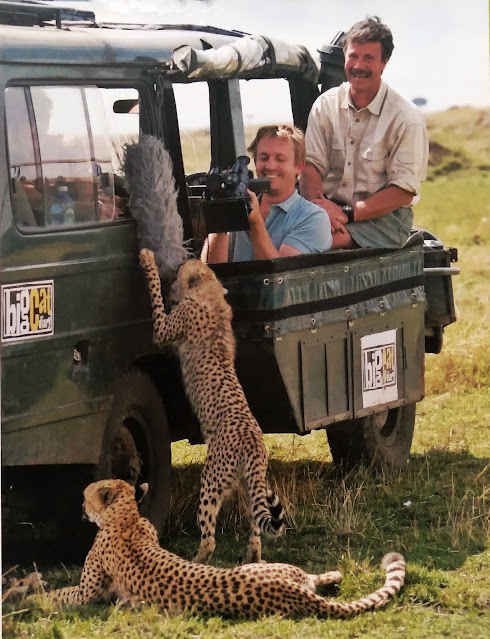






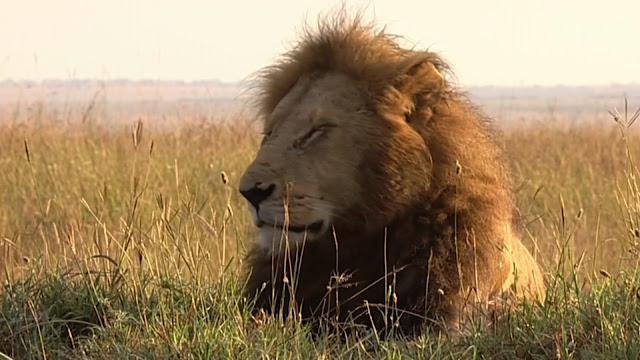
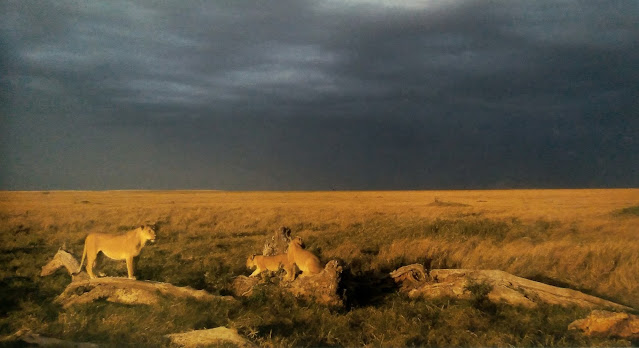

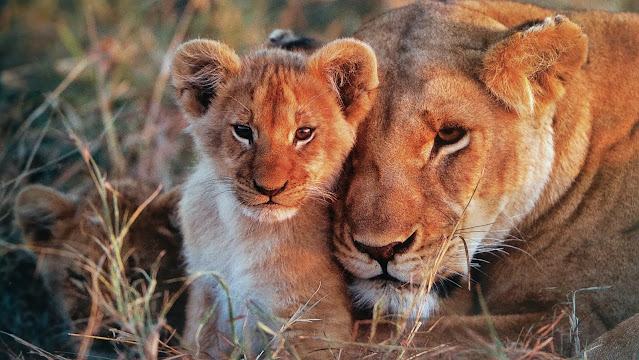


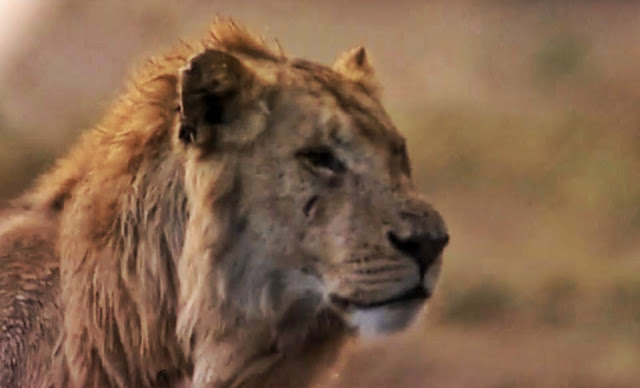


No comments:
Post a Comment